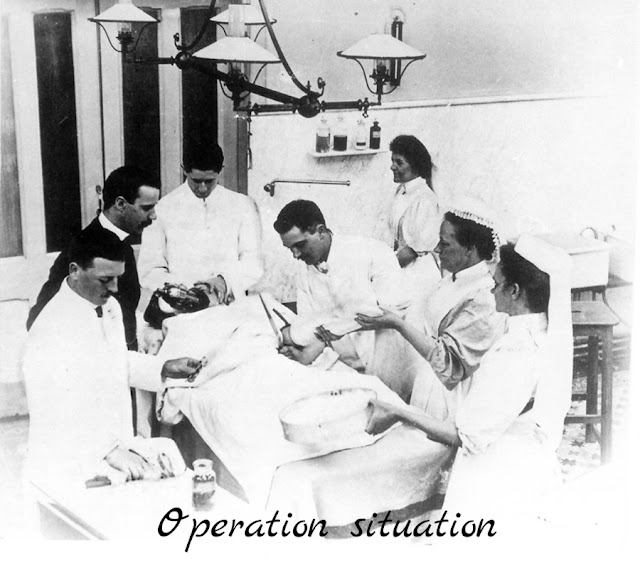HISTORY OF NINETEENTH-CENTURY OPERATION THEATER
Nineteenth-century operation theater
Their environment was dirty, indescribable
Crying cries of patients in pain
The shouting was horrible,
Anesthetics were not used then.
In the nineteenth century, speed was more important than skill in the absence of anesthetics. His success and reputation depended on how quickly a surgeon could perform the surgery. As a result, many surgeons who had no educational qualifications became famous at that time. One such famous surgeon was Robert Liston, who had a reputation for amputating an injured patient's leg in just 30 seconds!
During one infamous operation, he dismembered a patient so quickly that one of his assistants' fingers was cut off by a sharp weapon and a spectator's coat was torn. Reportedly, the visitor died of fear, while the patient and assistant had a gangrene infection!
Another patient approached Liston to remove the bladder stone and, fearing the operation theater environment and Lister's quickness, entered the bathroom and locked the door. Liston, who was 6 feet 2 inches tall, broke down the bathroom door and pulled her out, tied her to the bed and then performed the surgery.
In the nineteenth century physicians had no clear idea about microscopic germs and the mechanism of their transmission. The doctors were not aware of the fact that the patient could die due to such microorganisms. As a result, insects and worms roamed around the patients in the hospital rooms. Some hospitals, however, hired staff to eradicate the insects. In some cases the salaries of these employees were higher than those of surgeons!
In those days doctors wore blood-stained aprons. Far from changing aprons, they didn't even clean their blood-stained hands in the middle of multiple surgeries. He used to operate one by one with the same knife and scissors. They had the idea that after cleaning it will take blood again, then what is the benefit of cleaning! Another reason for not cleaning the blood of the apron was that the more blood there was in the apron, the more demanding the surgeon was.
Most patients died of anemia or post-operative infections. Patients' chances of survival after surgery were so low that hospitals often forced patients to pay in advance. In some London hospitals, the post-operative mortality rate at that time was more than 60 percent.
In that era, surgery was a spectacular affair. Many people went to the hospital to see the surgeries because they were excited about the progress of medical science at that time. But before the invention of television and cinema, many people flocked to hospitals to enjoy the life-and-death struggle. There were also arrangements to show the operation by cutting tickets in some hospitals.
Patients had to endure indescribable suffering at that time as there was no anesthetic. Fitzgerald found in his research that not only patients, but also surgeons often broke down and started crying when they saw their pain and screams. In a letter to her daughter, a woman who underwent such surgery in 1840 described the operation as a battle to the death. He said that before the operation, the surgeon came to his room and showed him the knife and told him to be ready for death.
In the late nineteenth century, surgical technology began to improve. In 1848, John Collins Warren was the first to operate on anesthesia at the Massachusetts General Hospital using ether gas. As a result, instead of a quick operation in front of the surgeons, the way is opened for a complex operation with a slow and healthy head. But at first there was no benefit for a long time. Rather the result was more negative. Because long-term surgery meant cutting down on the germs and giving them more time to spread to the wound.
This situation changed when a young surgeon named Joseph Lister, after learning about the bacterial discovery of Louis Pasteur, came up with the idea of an invisible bacterium as the cause of abnormal deaths of patients in the hospital and said that . He began researching a variety of chemicals to prevent germs, and was the first to invent a method of removing germs by cleaning wounds and knife-scissors with carbolic acid.
In 1855, he performed the first surgery using antibiotics. At first, however, he had to burn a lot of wood to make this invisible germ and the idea of using chemicals as a disinfectant acceptable to people. But two different discoveries by Collins and Lister ultimately played a groundbreaking role in the success rate of surgery and in alleviating the suffering of patients.




0 comments:
Post a Comment
Please do not enter any spam link in the comment box.